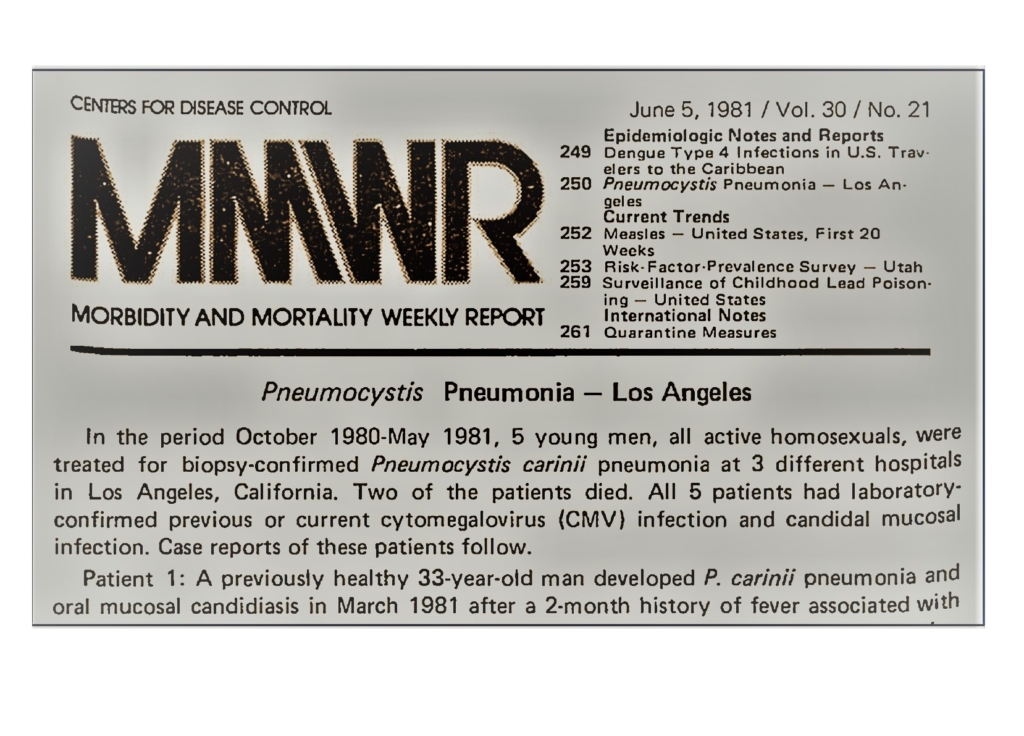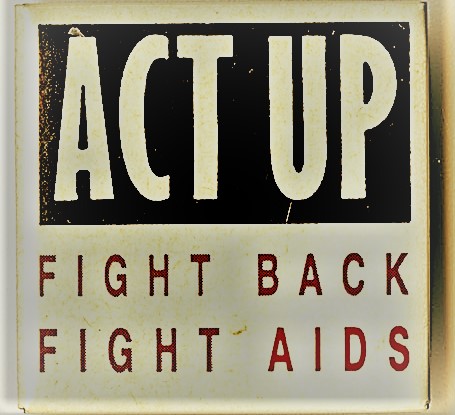Topic: The Impact of Prejudice and Discrimination Caused by Social Stereotypes on Sexual Minorities Living with HIV
Definition
Stereotype:
A stereotype is an oversimplified and often biased belief or assumption about individuals based solely on their affiliation with a specific group, disregarding their unique characteristics. Stereotypes can be either positive or negative and are often overly generalized to encompass all members of the group, even when individual variation exists. (“Stereotypes, Prejudice”)
Prejudice:
Prejudice refers to the presence of negative attitudes and feelings towards an individual solely due to their membership in a particular social group. It involves harboring unfavorable opinions about people based on their association with a specific group, even if one has limited or no personal knowledge of the individuals within that group. (“Stereotypes, Prejudice”)
Discrimination:
Discrimination involves the enactment of negative actions or unfair treatment directed at an individual because of their membership in a specific group. This mistreatment is typically a consequence of holding prejudiced beliefs and attitudes, and it can manifest in various contexts, including individual interactions, institutions, and societal systems. (“Stereotypes, Prejudice”)
HIV/AIDS:
HIV, short for Human Immunodeficiency Virus, is the culprit behind HIV infections. The term “HIV” can denote either the virus itself or the condition it causes. AIDS, or acquired immunodeficiency syndrome, represents the gravest stage of an HIV infection.zHIV targets and diminishes the CD4 cells (CD4 T lymphocytes) responsible for combating infections in our immune system. A dwindling number of CD4 cells hampers the body’s defense against infections, diseases, and certain cancers. If left untreated, HIV can progressively weaken the immune system, paving the way for AIDS. However, timely treatment can help the immune system bounce back. (“HIV and AIDS”)
History/Background(“HISTORY”)
1980s: Emergence and Stigmatization
Early Cases: The first recognized cases of what would become known as AIDS were diagnosed in the U.S. in the early 1980s, primarily among gay men. By 1982, the term “gay-related immune deficiency” (GRID) was being used, highlighting the initial association between the disease and the gay community.


Stigma and Fear: Due to its association with gay men, HIV/AIDS was heavily stigmatized. Many in the wider society viewed it as a “gay plague.” This stigmatization hampered early response efforts and led to further marginalization of the LGBTQ+ community.
1990s: Activism and Medical Advancements
Activism: Groups like ACT UP and Gay Men’s Health Crisis emerged, demanding governmental and medical action to address the AIDS crisis. Their efforts were crucial in changing the perception of HIV/AIDS from a “gay disease” to a global health issue.

Medical Progress: The 1990s saw significant advancements in antiretroviral therapy (ART), particularly with the introduction of combination therapy. This reduced the mortality rate from HIV/AIDS.
2000s: Global Perspective and Continued Challenges
Global Issue: By the 2000s, it became clear that HIV/AIDS was not just an issue for gay men or the West. Sub-Saharan Africa was particularly hard hit, and globally, heterosexual transmission accounted for a significant portion of cases.
Discrimination and Criminalization: Many countries criminalize HIV transmission or specific behaviors of people living with HIV. This led to further stigmatization and presented obstacles to effective public health approaches.
2010s and Beyond: U=U and PrEP
U=U (Undetectable = Untransmittable): There’s growing recognition that someone with an undetectable viral load cannot transmit HIV. This has been a game changer in terms of stigma and in the approach to prevention.
PrEP (Pre-exposure Prophylaxis): The introduction of PrEP, a medication regimen that can significantly reduce the risk of HIV acquisition, has transformed HIV prevention, especially among men who have sex with men.
Throughout this history, sexual minorities, particularly gay and bisexual men, have been at the forefront, both as affected communities and as leaders in the response. Transgender individuals, particularly transgender women, have also been disproportionately affected by the epidemic in many regions.

Examples
Ben’s Story – The Personal Journey of an Individual with 10 Years of HIV:
Initial Diagnosis and Health Crisis:
In 2013, Ben was diagnosed with HIV. The discovery came late, leading to various complications, and he ended up in the emergency room in critical condition. The severity of his situation forced his parents to be made aware, as the hospital needed a family member to sign a critical illness notice, which unintentionally outed Ben regarding his status.
Feeling of Isolation:
Initially, Ben felt he was the only one afflicted, comparing his situation to “winning a lottery of several millions.” Despite receiving encouragement from some people around him, he continuously felt like an outcast. This feeling of alienation was a driving factor for Ben to publicly disclose his status in 2016. The media portrayals he had seen often depicted those infected with HIV as emaciated and sickly. Working at a testing center, Ben witnessed the profound impact of a positive diagnosis on individuals, recounting the heart-wrenching experience of a college student self-harming and contemplating suicide upon testing positive.
Relationship Challenges:
In subsequent relationships, Ben would disclose his status as an HIV patient. Yet, this openness posed its own set of challenges. Many potential partners would be greatly concerned about his condition, leading Ben to consider relationships predominantly with others who were also HIV carriers.
Moral Implications:
Ben’s story underscores a crucial point: an illness should never be equated with one’s morality or character. Discrimination and stigma surrounding HIV often wrongfully judge a person’s character based on their health condition.
HIV/AIDS – Origin, Spread, and The Myth of “Patient Zero”
The HIV/AIDS epidemic emerged as a grave concern in the early 1980s, initially recognized by rare lung infections and atypical cancers in young gay men in the U.S.
A significant point of contention in the epidemic’s history is the notion of “patient zero”. While the first substantiated HIV case traces back to a 1959 blood sample from the Democratic Republic of Congo, it’s vital to note that this isn’t necessarily the inaugural human occurrence of the virus. Over time, Gaétan Dugas, a flight attendant, was erroneously labeled as the initial carrier, or “patient zero”, of HIV in the U.S. However, genetic research from 2016 clarifies that the virus strain he had was present in the U.S. before he arrived, so Gaétan Dugas was not really the first one who got it, but the first case being reported.
The understanding of HIV’s origin has significantly evolved. Research suggests its close resemblance to the Simian Immunodeficiency Virus (SIV) found in primates. It is theorized that HIV transitioned from chimpanzees to humans, possibly through hunting, ultimately adapting and evolving within its new human host.
Deciphering the origins of any virus is paramount. It provides insights into its nature, transmission modes, host interactions, and links to prior outbreaks, facilitating the development of effective treatments and preventive measures.
In essence, while we have made tremendous strides in understanding and treating HIV/AIDS, its history, peppered with myths like “patient zero”, underscores the importance of accurate narrative construction in shaping public perception and response.
Critical Issues Faced by LGBTQ+ and HIV/AIDS Communities in Healthcare
Documented Discrimination:
The healthcare system, for many LGBT and HIV/AIDS patients, has unfortunately been a setting where their identities or health statuses have led to outright denial of care. For example, approximately 8% of LGB individuals, nearly 27% of transgender and gender-nonconforming individuals, and almost 20% of HIV-positive individuals have reported being denied needed healthcare. Discrimination isn’t only about outright denial. It extends to the treatment meted out during their healthcare encounters. Many patients report harsh language, excessive precautions as if they were contagions, or blame for their health conditions. One particularly distressing account is of a transgender patient who sought treatment for a sore throat but was forced into a pelvic exam. The doctor even invited others to observe, turning a routine visit into a spectacle and violating the patient’s privacy and dignity.
Life-threatening Consequences:
Discrimination can be fatal. There’s the tragic case of a 39-year-old teacher who, as alleged in a lawsuit, was denied crucial medical attention upon the revelation of her lesbian identity. She fell into a coma after being abandoned for over an hour in a hospital and subsequently passed away.Another account involves a 53-year-old man denied a potentially life-saving kidney transplant due to his HIV-positive status. Or the HIV-positive patient whose primary care physician treated him so poorly that the patient ended up in an ER with multiple severe conditions, including internal bleeding and pneumonia.
Fear and Avoidance:
The recurring patterns of discrimination and mistreatment breed a significant amount of fear among LGBT and HIV/AIDS communities. Such consistent negative experiences have led many to avoid seeking medical care entirely, even when urgently needed.The trust deficit is so large that many individuals feel the need to withhold crucial personal information, fearing discrimination or ill-treatment. Nearly 30% of transgender individuals have reported avoiding medical care due to experiences of disrespect and discrimination. Similarly, over 1 in 5 LGBT individuals admit to not discussing their sexual practices with their healthcare providers, potentially limiting the healthcare advice they receive.
In Art/Representations–Philadelphia

Overview:
“Philadelphia” is a groundbreaking legal drama that focuses on Andrew Beckett, a talented lawyer in a prestigious Philadelphia firm, who hides his homosexuality and HIV-positive status. When a lesion associated with AIDS becomes noticeable on his face, the firm contrives a reason to fire him. Feeling discriminated against, Beckett seeks legal help but faces rejection due to the stigma surrounding AIDS. He finally convinces Joe Miller, a personal injury lawyer, to represent him, despite Miller’s initial prejudices about AIDS and homosexuality. The ensuing courtroom battle highlights the prejudices faced by HIV/AIDS patients and the LGBTQ+ community. As Beckett’s health deteriorates, the trial becomes not just a fight for justice but also a statement against societal discrimination. The film, starring Tom Hanks and Denzel Washington, was one of the first major Hollywood productions to address HIV/AIDS, homophobia, and gay rights, garnering acclaim and sparking conversations on these important issues.
Scenes Reveal the Theme of A Gay Man Living with HIV
- Lesion Discovery: A coworker notices a lesion on Andrew Beckett’s forehead, hinting at his HIV status.
- Dismissal: Beckett is fired soon after his HIV status and sexuality are discovered.
- Joe Miller’s Reaction: When Beckett seeks legal help, lawyer Joe Miller is initially fearful of contracting HIV from being near him.
- Library Incident: In a library, Beckett faces discrimination when researching AIDS, highlighting society’s discomfort.
- Courtroom Defense: During the trial, Beckett’s HIV is blamed on his gay lifestyle, showing stigma.
- Health Decline: Beckett’s health visibly worsens as the movie progresses.
Showing the Lesions: In court, Beckett displays his AIDS-related lesions to the jury. - Beckett’s Passing: The movie ends with the news of Beckett’s death due to complications from AIDS.
Relevance to the Larger Theme
“Philadelphia” is not just a film; it’s a powerful statement against discrimination based on health status or sexual orientation. By humanizing the experience of an HIV-positive gay man and highlighting societal prejudices, the film underscores the importance of acceptance, understanding, and legal protection for marginalized communities. The movie is a testimony to the potential of cinema to challenge societal norms, foster empathy, and instigate discussions on previously taboo subjects.
Work Cited
ENOCH, JAMIE, and PETER PIOT. “Human Rights in the Fourth Decade of the HIV/AIDS Response: An Inspiring Legacy and Urgent Imperative.” Health and Human Rights, vol. 19, no. 2, 2017, pp. 117–22. JSTOR, http://www.jstor.org/stable/90016119. Accessed 11 Oct. 2023.
“Health Care Refusals Harm Patients: The Threat to LGBT People and Individuals Living with HIV/AIDS.” National Women’s Law Center, 21 May 2014, nwlc.org/resource/health-care-refusals-harm-patients-threat-lgbt-people-and-individuals-living-hivaids/#:~:text=Fear%20of%20discrimination%20prevents%20LGBT,alienated%2C%20ashamed%2C%20and%20vulnerable. Accessed 22 Oct. 2023.
“HISTORY.” AIDS Monument, aidsmonument.org/history/. Accessed 17 Oct. 2023.
“HIV and AIDS: The Basics.” HIVinfo, hivinfo.nih.gov/understanding-hiv/fact-sheets/hiv-and-aids-basics. Accessed 16 Oct. 2023.
“Philadelphia.” Timeout, 16 Nov. 2015, www.timeout.com/movies/philadelphia. Accessed 23 Oct. 2023.
“Philadelphia (film).” Wikipedia, en.wikipedia.org/wiki/Philadelphia_(film)#:~:text=Philadelphia%20is%20a%201993%20American,Tom%20Hanks%20and%20Denzel%20Washington. Accessed 19 Oct. 2023.
Philadelphia (1993) – Trailer. Youtube, www.youtube.com/watch?v=l433n5zAxAU. Accessed 25 Oct. 2023.
Song, Xiaozhen et al. “Correlation between Negative Life Events and Suicide Attempts among Yi Adolescents with HIV/AIDS in Liangshan Prefecture.” BMC Public Health, vol. 23, 2023, article number 1600. Accepted: 13 October 2023. DOI: 10.1186/s12889-023-16377-1.
“STDs and HIV – CDC Basic Fact Sheet.” Centers for Disease Control and Prevention, 12 Apr. 2022, www.cdc.gov/std/hiv/stdfact-std-hiv.htm. Accessed 11 Oct. 2023.
“Stereotypes, Prejudice and Discrimination.” MARICOPA, open.maricopa.edu/culturepsychology/chapter/stereotypes-prejudice-and-discrimination/. Accessed 17 Oct. 2023.
Thottacherry, Elizabeth, translator. “Who Is HIV Patient Zero?” MedicalNewsToday, 10 Feb. 2023, www.medicalnewstoday.com/articles/who-is-hiv-patient-zero-history-and-origins. Accessed 21 Oct. 2023.
Yan, Yuquan. “关于艾滋病的五个误解.” Zhihu, www.zhihu.com/market/paid_magazine/1117536936268550144/section/1117536954018885632?origin_label=search. Accessed 11 Oct. 2023.
如果一个人染上了艾滋病,那么他还能活多久?. 三个老爸实验室吖, 22 Jan. 2023. Bilibili, www.bilibili.com/video/BV1jY411b7tr/?spm_id_from=333.337.search-card.all.click&vd_source=43733d931351bbb437d62f1dcc914fe2. Accessed 12 Oct. 2023.”感染HIV十年的生活漫谈.” Bilibili, uploaded by 叫我康康Shawn, www.bilibili.com/video/BV1Et4y157MU/?p=2&spm_id_from=pageDriver&vd_source=43733d931351bbb437d62f1dcc914fe2. Accessed 11 Oct. 2023.
